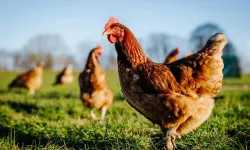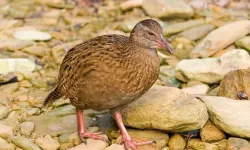Refurbishing a kitchen can be expensive, but a couple from Dorset have found it to be a "lucrative business" after discovering more than 1,000 17th-century coins hidden under the floor.
Betty and Robert Fook were removing the concrete floor of the kitchen to create more ceiling height in their Dorset farmhouse when Robert, an agricultural engineer, discovered a broken pottery bowl filled with 400-year-old coins.
The couple notified the authorized liaison officer and the artifact was sent to the British Museum for cleaning and identification. The coins, known as the Poorton hoard, will go on sale at "The Duke's Auctioneers" in Dorset and are expected to fetch around £35,000.
The lady of the house, Betty Fooks, said of the discovery:
"This is a 400-year-old house, so there was a lot of work to do. We were ripping out the whole floor and ceiling and reexposing the stone walls, and we decided to lower the ground floor to give us more headroom. One evening I was with the children and my husband called me to tell me that they had found something while digging with a pickaxe. He put all the coins he found in a bucket.If we hadn't decided to lower the floor, they would still be hidden there. I think the person who buried them was hoping to get them back, but he never had a chance."
Discovered in October 2019, the pot contains gold coins, silver crowns, shillings and sixpence coins stamped King James I and King Charles I, and silver shillings and sixpence coins stamped Elizabeth I and Prince and Princess Philip and Mary.
"Julian Smith, a specialist at 'The Duke's Auctioneers', said:
"The house is located in a small village in west Dorset and dates from the 17th century. The property was purchased by the current owners in 2019 and an extensive refurbishment project has begun. The modern concrete floor was removed and the ground was excavated by around 60cm to provide more height to the lower floors of the property. In some areas, old paving stones were found under the concrete, but the area where the coins were found was just soil. The coins are at the British Museum for identification and cleaning, and experts believe they were placed there all at once."
The sale is expected to take place on April 23rd.















